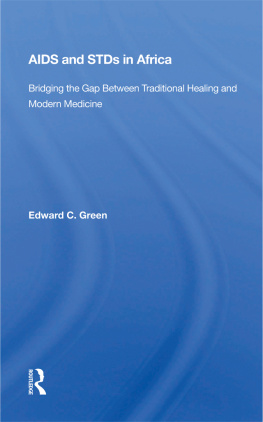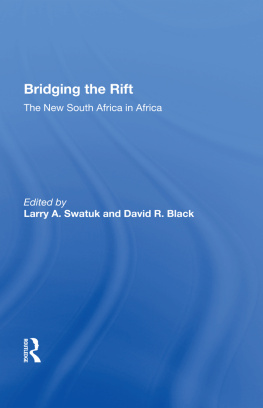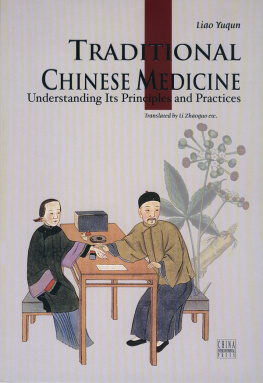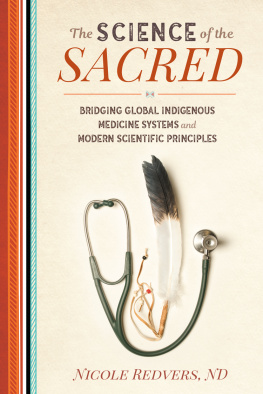First published 1994 by Westview Press
Published 2018 by Routledge
52 Vanderbilt Avenue, New York, NY 10017
2 Park Square, Milton Park, Abingdon, Oxon OX14 4RN
Routledge is an imprint of the Taylor & Francis Group, an informa business
Copyright 1994 by Taylor & Francis
All rights reserved. No part of this book may be reprinted or reproduced or utilised in any form or by any electronic, mechanical, or other means, now known or hereafter invented, including photocopying and recording, or in any information storage or retrieval system, without permission in writing from the publishers.
Notice:
Product or corporate names may be trademarks or registered trademarks, and are used only for identification and explanation without intent to infringe.
A CIP catalog record for this book is available from the Library of Congress.
ISBN 13: 978-0-367-01405-6 (hbk)
Some of the ethnomedical data from Swaziland presented in this paper was collected while I was working for the Academy for Educational Development under contract no. 465-0087 with the Agency for International Development (AID). Subsequent research in Nigeria, Liberia, Mozambique, South Africa, and Tanzania was funded by AID (SOMARC, HEALTHCOM, and AIDSCAP projects), sometimes with additional funds from the Population Crisis Committee (now Population Action International), the Pathfinder Fund, and the European Community. Among donor agencies, AID has been especially open to supporting programs involving traditional healers since the late 1970s. AID has supported several training programs for African healers by providing direct funding as well as technical support from medical anthropologists and others.
The views arid opinions expressed in the book are my own and are not necessarily shared by any sponsoring organization or agency. I would like to thank the following colleagues for their valuable help in research and interpretation of findings: Joseph Phinias Mangcuzu Gama, Elias Nyoni, Lydia Makhubu, Petros Gama, Ernest Mnisi, and Wellington Mbele in Swaziland; Annemarie Jurg, Taju Tomas, and Armando Djedje in Mozambique; Mike Egboh and Esther Onuaguluchi in Nigeria; Harold Monger in Liberia; Bongie Zokwe and J. D. Dupree in South Africa; Anne Outwater, George Lwihula, Lucy Nkya, Hawa Nyamichwo, and Salina Mkony in Tanzania; and Sue McLaughlin in connection with all countries. I also want to thank D. Michael Warren, Charles Good, Patrick Oseweri, and Joop dejong for their critical readings of the manuscript and H. Russel Bernard for guiding me toward applied anthropology.
Edward C. Green

The war against AIDS in Africa is not going well ("Africa" denotes sub-Saharan Africa throughout this book). In his opening address to the 8th International Conference on AIDS (1992), Jonathan Mann admitted, "The old public health vision has become a straightjacket" confining planners to approaches to the prevention of AIDS that are not succeeding. In an interview with Africa Report (1992), Dr. Peter Lamptey, director of USAID's $168 million global project to control AIDS, observes that with only a very few exceptions, even the most successful condom promotion programs in Africa have "failed to make a dent in the epidemic." I agree with these assessments. I believe that the two-pronged approach that has dominated AIDS control programs thus farnamely, the promotion of condom use and restricting one's number of sexual partners (and there may be a mixed message right there)has merit but is too little, too late for Africa.
For all their major emphasis in AIDS control programs in Africa (and elsewhere), in actual use condoms may only have a 50 percent effectiveness rate in reducing most sexually transmitted diseases. This is due to incorrect usage and to available products being of poor quality, partly because of inadequate storage and transportation under tropical conditions. These reasons are quite apart from problems of availability and acceptability in Africa. Millions of dollars have been spent on promotion and millions of condoms have been distributed in Uganda, the African nation with the greatest number of AIDS cases, yet the percentage of men regularly using condoms was about 3 percent in early 1993. How much programmatic emphasis on condoms is justified if at best we can hope to increase condom prevalence from 3 percent to perhaps twice that in the next two to three years? Note also that by African standards, condoms are reasonably accessible and AIDS awareness is high in Uganda. In view of all these problems, where else should there be programmatic emphasis?
AIDS is primarily a heterosexually transmitted disease in sub-Saharan Africa, unlike the pattern found in the industrialized West. Heterosexual intercourse, in fact, accounts for over 80 percent of African HIV cases. A major contributing factor appears to be the prevalence of other untreated or improperly treated sexually transmitted diseases (STDs) that facilitates the transmission of HIV. Most sub-Saharan countries of Africa suffer inordinately from STDs, compared with both industrialized countries and other less-developed parts of the world, even apart from the recent pandemic of AIDS. Because of the link between the presence of STDs and the heterosexual transmission of AIDS, there is now an additional and urgent reason to treat and prevent STDsto curtail the spread of HIV infection.
Unlike AIDS, most standard or nonviral STDs are curable as well as preventable. Yet there have been surprisingly few financial or other resources thus far devoted to STD control programs. Another problem is how actually to lower the incidence of STDs. Most STD cases in Africa appear not to be presented at biomedical health facilities (biomedical will be used as a short-hand way of denoting Western-style, scientifically based, allopathic medicine); they are taken to traditional healers. True, traditional healers provide most of the health services of whatever sort in Africa (de Zalduondo, Msamanga, and Chen 1989). But beyond that, STDs are often regarded as an area of particular competence by African healers, as evidence presented in this book will show. The clients of traditional healersthe majority of Africansalso seem to believe that traditional medicines are especially effective in treating STDs. This means that for better or worse, traditional healers see and treat most of the cases of STDs in Africa. It also means that it would be more difficult to persuade millions of Africans to seek biomedical treatment for STDs than, say, for tuberculosis or choleraeven if African health ministries were in a position to launch an effective mass-treatment program for STDs, which they are not.
I believe these facts must be accepted if we are to seriously impact the high incidence and prevalence of STDs and therefore HTV infection rates in Africa. Yet what I term facts are not as yet acknowledged or accepted by most of what can justifiably be called the AIDS establishment. Only the odd anthropologist or health educator seems to argue for a role for traditional healers in AIDS control and prevention, and even their arguments rarely focus on STDs. In fact, those few who argue for a role for traditional healers in AIDS prevention tend not to mention STDs, while those who argue for preventing AIDS by controlling STDs tend not to mention traditional healers.










